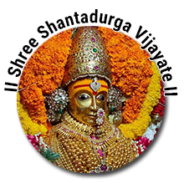GSB History
Theories about the original home of Goud Saraswat Brahmin [G.S.B.] are a legion. That the word Saraswat is derived from Saraswati, name of an ancient river is, however, more or less certain. The river sprang from Himalayas and a number of references to it are found in Rigveda and later Hindu religious literatures like Mahabharata and Smrities. Several prayers in Rigveda are addressed to the river Saraswati, inter alia, invoking her grace and beseeching her not to compel the inhabitants who had made the banks of the river their abode to leave her fair banks to migrate to other territories. However, there was a black famine in the region for twelve years due to which the Brahmin families were forced to migrate to other regions like Bengal, Bihar and Southern India. It is believed that the saraswat community which settled in Bengal, then known as Goud, derived the name Goud Saraswat Brahmins.
As for the community’s reaching Goa, it is said that in Tetrayug, there was a Saraswat Brahmin named Jamdagni who was a great Ascetic (Rishi). He had a cow, known as a Kamdhenu because she was endowed with the power of fulfilling every wish. Once Sahastrarjun a King from Kshatriya (warrior) community had gone to the forest for hunting, he found Jamadagni Rishi’s ashram and went there for resting. When he saw the cow, Kamdhenu, he expressed a desire to possess it. The Rishi, however, declined to part with it. The king in his arrogance, killed the Rishi and also badly injured his wife, Renuka and took away the cow. At that time the Rishi’s son, Parshuram, had gone away in the deep forest for performing Yagnya. There he came to know of the terrible news. He rushed back to the ashram and in his fury took a vow that he would annihilate all kshatriyas from this earth. He fought fierce wars and ultimately completed his vow. Thereafter he gifted the entire earth conquered by him to Brahmins. He then felt that it was not proper to live on the land gifted away by him. He, therefore, went to the west of the Sahyadri mountain range and created a new region called ‘Shurparakha’ for himself by pushing back the western sea. Today a small area in the north Konkan is called Surparaka (Sopare). In the Sahyadrikhand where there is a description about the idols installed by Rishi Parshuram in Konkan, Kuthhal has been referred to as ‘Shurpark Kushasthalli’.
Before settling in the new place, Rishi Parshuram performed a big Yagnya for which he brought from the Goud region 66 families of G.S.B. belonging to ten Gotras (linear ancestry) viz. Bhardwaj, Koushik, Vatshya, Koundinya, Kashyap, Vasishtha, Jamdagni, Vishwamitra, Gautam and Atri who were worshipping the patron deities Mangirish, Mahadev, Mahalakshmi, Mhalasa, Shantadurga, Nagesh and Saptkotishwar. These families brought along with them idols of their patron deities. After the Yagnya was successfully completed, Rishi Parshuram presented some of the villages to these Brahmin families to enable them to settle there. The GSB families installed their family deities which they had brought with them in their own homes.
The place where these families first made home was called Saswad Mahal. Over the years with the growth of the community, the worship of the family deities assumed a social significance and temples were built for these deities as well as for the Gramdevata i.e. the deity which looks after the welfare of the village, where they were worshiped by the community. A brahmin, Lomsharma from Kaushika Gotra., got the village Kardalipur (Keloshi) as a gift. He installed his family’s patron deity Goddess Shree Shantadurga devi in that village. The brahmins Devasharma and Shivsharma from the Vatsya and Kaundinya gotra, respectively got the village Kushasthali ( presently known as Kudthali or Kuddal) where they installed their patron deity Shree Mangesh (also known as Shree Mangirish).
The brahmins who installed these deities, i.e. Lomsharma, Devsharma and Shivsharma are known as the Mul Purusha (linear ancestor) of the Kaushika, Vatsya and Kaundinya Gotra respectively.
